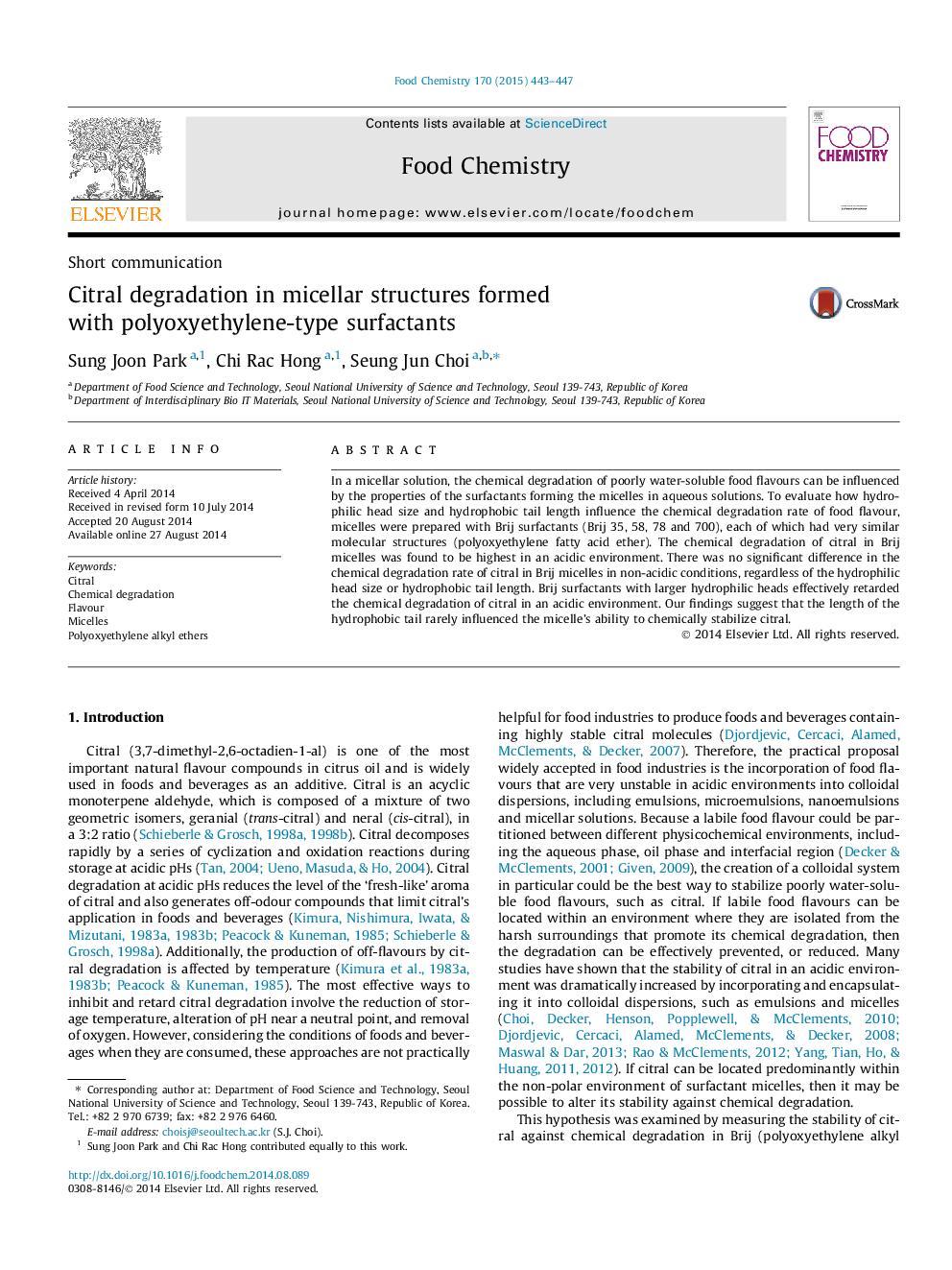| Article ID | Journal | Published Year | Pages | File Type |
|---|---|---|---|---|
| 1185611 | Food Chemistry | 2015 | 5 Pages |
•The rate of chemical degradation of citral reduced in the micellar systems.•Brij with larger hydrophilic head was more effective to stabilize citral.•The hydrophobic tail length did not have any influence on the citral stability.
In a micellar solution, the chemical degradation of poorly water-soluble food flavours can be influenced by the properties of the surfactants forming the micelles in aqueous solutions. To evaluate how hydrophilic head size and hydrophobic tail length influence the chemical degradation rate of food flavour, micelles were prepared with Brij surfactants (Brij 35, 58, 78 and 700), each of which had very similar molecular structures (polyoxyethylene fatty acid ether). The chemical degradation of citral in Brij micelles was found to be highest in an acidic environment. There was no significant difference in the chemical degradation rate of citral in Brij micelles in non-acidic conditions, regardless of the hydrophilic head size or hydrophobic tail length. Brij surfactants with larger hydrophilic heads effectively retarded the chemical degradation of citral in an acidic environment. Our findings suggest that the length of the hydrophobic tail rarely influenced the micelle’s ability to chemically stabilize citral.
